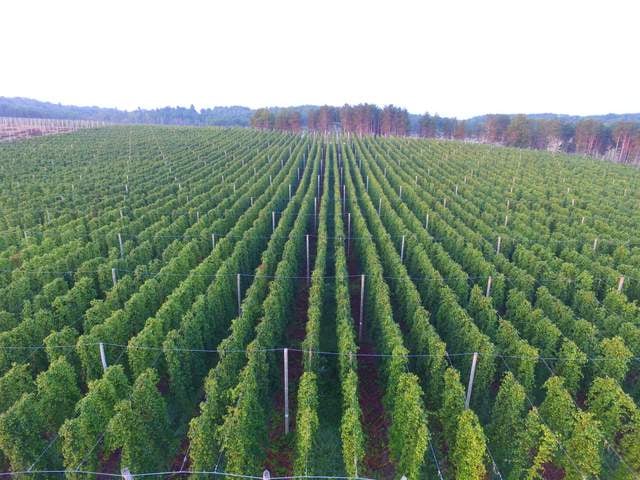
In full bloom, hopyards are works of art. Elaborate trellis systems create these wild green hallways woven of stems, leaves and cones. Imagine farm hands creating these amazing tapestries by hand, carefully threading each hop stem up a coir string, a twine made from Sri Lanka coconut husks, each attached to 18-ft wooden poles. It takes a year of planning and four important months of constant nurturing to naturally engineer towering hop rows like that photo above, navigating weather, water, disease, machine and labor challenges. It takes three years just for a single hop plant to reach maturity, large enough to produce the massive yields and unique flavors required by commercial operations. Then there’s harvesting, processing, sales and so much more.
Hop farming — like all farming — is not easy, and those intrepid souls who choose to start a hop farm from the ground up require an obsession not unlike an artist. Mark Trowbridge, co-owner of Top Hops Farm and chairman of the Hop Growers of Michigan, prefers a sports analogy to describe the harvest.
“It’s kind of like running a marathon,” he explained over the phone. “You get anxious before the marathon. You’re excited about it, and then halfway through you can’t wait for it to be over. Then when it’s over you start asking yourself, well, I wonder when the next one is. I wonder if I could do better next time.”
Long-distance runners like Trowbridge are a rare species of farmer still representing the Michigan hop industry, the fourth biggest hop region in America. First, let’s put that number in perspective. According to my previous analysis of the Hop Growers of America’s (HGA’s) 2019 Statistical Packet (2020 is not out yet!), the Pacific Northwest (Washington, Oregon and Idaho) produced 56,544 acres and 112,041,200 lbs of hops in 2019. The HGA’s network estimates there are only about 2,386 acres of commercial hopyards outside of the Pacific Northwest in America, yielding a cool million pounds all together. Michigan boasts the majority of those acres with around 500, but acreage is down.
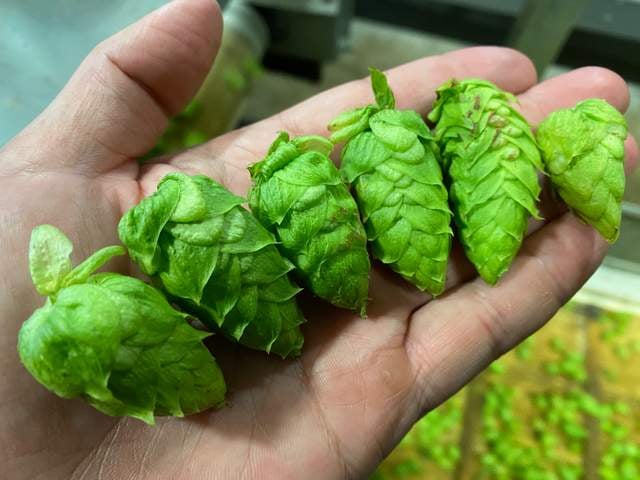
It used to be around 700 acres, but as you may remember, hop farming is not easy. Even before the pandemic, it was clear that independent hop yards in Michigan were struggling. Now, at the end of 2020, the membership of the Hop Growers of Michigan has dropped from 110 to below 40, with only 11 farm members attending the last meeting.
“A lot of the people who were [at the meeting] are the passionate farmers who are in it for the long-term,” said Mike Moran, vice president and sales director for MI Local Hops, Michigan’s biggest hop farm at 220 acres. “I would say there were 11 farms there total, and everybody there was concerned, but there was also optimism. I think the most important thing that everybody needs to understand is that we’re trying to compete with the Pacific Northwest which has been in business for over a 100 years and has these generational farms. It’s really hard for these small farms to think long-term if they got into it for a quick buck. We’re seeing those farms get out. So, everybody who was still in it has been through some pain, but overall, they realized the value of being able to serve the Midwest craft brewing industry.”
The value of Michigan hops might be more important than we think. Let’s turn our collective head to the Klondike Fire that burned more than 175,258 acres of Oregon in 2018 or maybe to California’s Creek Fire that is now the largest single fire in the state’s recorded history and still only 96 percent contained last time I checked.
“I think that the first big pitch for Michigan hops for me is the surety of supply,” said John Mallett, vice president of operations at Bell’s Brewery, which also grows two acres of hops next to its Comstock brewery. “Oregon had these wildfires very close to hop fields. There are some quality issues that could come up in terms of smoke damage. We need to think in terms of a long-range viable industry. If I’m buying bottles, I want to make sure I have multiple bottle vendors in case there’s a problem. So, I think it’s incumbent on all of us to kind of have that long range vision and to help diversify the supply chain. Second of all, I think that hops are very influenced by terroir.
“If I’m looking out across the world where hops are grown, there are certain parallels with great hop growing regions,” Mallett continued. “There’s an area located in the hop growing area of Germany [Tettanang] that is located next to a large lake [Lake Constance or “Bodensee“]. There are lots of cherries and apples grown there. The weather’s a little cooler. You contrast that with like Yakima or Idaho, things are very dry. Everything is irrigated. The soil types are different. So, in some ways, we may be closer to Germany than we are to Washington from a growing standpoint, and that is a positive.”
It’s an opportunity for a unique hop experience — the Michigan or Midwest hop experience — well-grown, generational hops that present bold and unique flavors because of their unique growing environment. Creating that experience will take decades of dedication, obsessively cultivating rows of bines like works of art. Luckily, we can begin to get a taste of it right now.
Taste the terroir
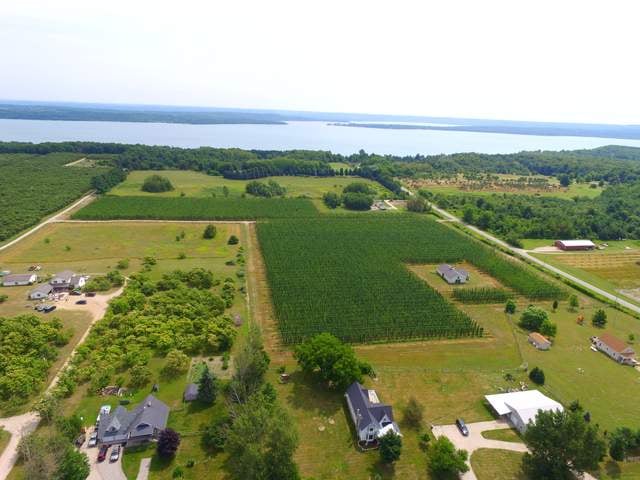
In 2020, the Hop Growers of Michigan is holding its fourth annual Chinook Cup, modeled after the national Cascade Cup hop competition. Michigan Chinook is a great example of one of the top selling hop varieties in America that can be grown with a uniquely Great Lakes flavor. Chinook grown in the Pacific Northwest is known for its spicy, piney and dank profiles. Michigan Chinook is increasingly recognized for its clean, citrusy attributes.
“It picks up a little bit of pineapple flavor,” added Trowbridge. “Compared to the Pacific Northwest, it picks up more aroma.”
“Chinook has been a huge hop for our state,” confirmed Moran. “A lot of our Midwest neighbors have been heavily invested in Chinook. We’re sold out of it, [noting MI Local still has 2018 Chinook for sale!]. That’s big a big deal for us. I know a lot of Ohio breweries, like your Cleveland market, they’ve been trying to eat it up.”
Chinook thrives in Michigan. Regions around the Great Lakes have all the preconditions to propagate quality hops like Chinook and beyond: long day lengths to flower and produce adequate cone yields and those specific chilling requirements with winter temperatures below 40 degrees F for at least one to two months. Ideal Michigan conditions include sufficient spring moisture (check) followed by significant periods of summer sun and balmy heat (check) to ensure ample development of those lovely chemical compounds. Also, marketable yields of hops are produced in well-drained, deep, sandy loam soils (check, check, check).
Those kinds of conditions produced Michigan Copper, another unique Midwest lupulin experience. It’s a versatile hop rich in stone fruit, pineapple, and candy notes. It pairs perfectly with those increasingly popular juicy IPAs and also classics like pale ales, lagers, Belgians and even porters and stouts.
“This is year five for our Michigan Copper,” said Moran. “It’s become a very versatile hop. It’s more on the fruit side of things — stone fruit and pineapple aroma. Usually, the alpha ranges between 10 and 13. It really thrives as a dry hop. I would say the same thing for Mackinac. It’s specifically on the Hawaiian fruit punch side, but you don’t really get those characteristics until about year three. That’s when things really started becoming mature in the yard, and we have definitely seen it progress and become more consistent.”
It takes time to make anything great. Michigan can offer unique spins on a slew of different hop varieties — Brewers Gold, Crystal, Glacier, Mackinac, Tettnanger, Magnum, Cascade and beyond — but brewers will need to support these boutique farms if they’re going to accomplish long-term success. That’s a part of Bell’s Brewery’s mission. It literally buys tons of local Centennial.
“We’re doing roughly 30,000 pounds specifically of Centennial,” said Mallett. “To put that in perspective, overall, we buy in excess of a half million pounds of Centennial every year. Really. the opportunity we saw was to play in the Centennial market, but we are into these Midwest hops for multiple reasons, and one of them is to support a nascent and local industry. So, chances are, we can find hops less expensive, but we’re interested in making sure that Michigan has a viable industry. It’s important for us to buy local but also be dispersed.”
Can you get past the price?

Michigan hops are expensive. Craft beer is expensive. Boutique businesses are never the most economical based just on price point. Hops are difficult to grow on a small scale. It takes years just to begin to produce high volumes with big flavor profiles. Michigan farmers are competing with multi-generational hop farms that have been in business for more than 100 years in the Pacific Northwest, and those farmers are struggling (read this 2020 overview). These are some of the challenges.
“I think the biggest misconception and what people need to understand is that when you’re starting out as a hop farm, your price point when you’re bringing hops to market is going to be anywhere from $8 to $12 a pound,” said Moran. “Like we’re not growing Crystal right now, and we’re trying to decide if we’re going to continue to grow it. But when the Pacific Northwest comes out and can offer that hop at $2 a pound right away, that’s where I think the independent farms are getting whacked. It’s hard to beat. It’s very hard to beat. And, a lot of the farms because of the hop shortage in ‘14, when they were originally coming out, they went to the banks and they got their loans based on those $13 and $14 price points a pound. You can’t sell Crystal or Cascade for $13 a pound. It’s got to be around $6, $7, $8. That’s where we have to be.”
There are only a select few commercial Michigan farmers willing to stick with the effort — represented by the likes of MI Local Hops, Top Hops Farm, Hop Heads Farms, Michigan Hop Alliance, Pure Mitten, Eygpt Valley, Two Track Farms, Hang’em High Hops, Mr. Wizard’s Hops, Taylor Hop Farms, Blue Lakes Hops, 45th Parallel Hops and beyond. Michigan actually used to be a lupulin Shangri-La back in the mid-1800s. Hops and cherries were the state’s biggest crops back then, until the hop industry was eradicated by downey mildew, pesky insects called hop louse and drought. Today, Michigan is once again becoming an agriculture hub, and the hop farm has been resurrected as a result of the Wolverine State’s thriving craft beer industry. Luckily, the industry does have some guidance.
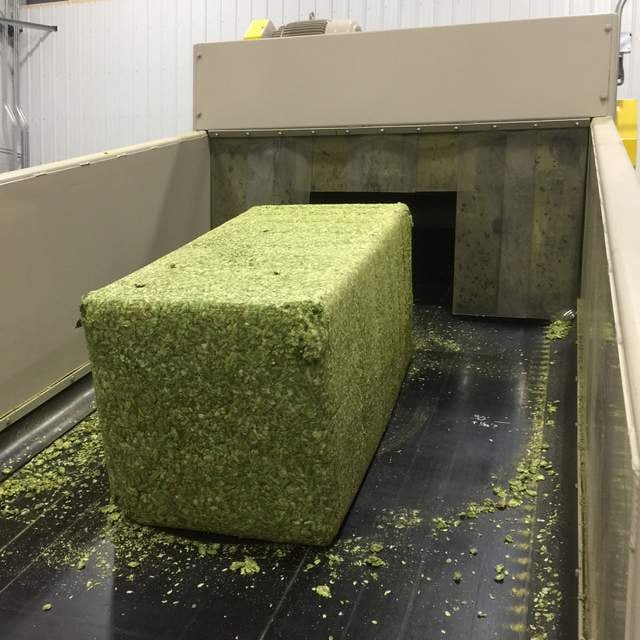
Michigan State University Extension is a thought leader for Great Lakes region ag commodities from corn to soybeans to hops. For the latter, the university works with the Great Lakes Hop Working Group, formed in 2016 to provide region-specific pest management support to producers in remerging hop production outside of the Pacific Northwest while supporting sustainable hop production in the Great Lakes region. With the university’s insights and breeding program, along with great organizations and supporters like the Hop Growers of Michigan and Bell’s Brewery, Michigan hopyards are hoping to improve on issues like price and quality.
“What does quality mean? There’s different aspects of it,” explained Trowbridge. “From a plant standpoint, quality is a healthy hop plant that’s been taken care of based on science — irrigated correctly, fertilized correctly, protected from mildews and insects. Pest control is crucial. A lot of the people that were in the business and got out, they wanted to be weekend farmers. And, you know, they ended up with poor quality because it doesn’t take much more than three or four days, and you can go from having a healthy plant to a sick plant.
“On the other end of it, there is drying,” Trowbridge continued. “I mean, some people had no idea what it took to do a good job of drying without destroying the hop, ruining the aromas or maybe not drying it enough. A lot of people spend all summer long growing good quality hops, and you can ruin them in one day. You know? So, we put together a program that’s called the Verified Source Program, and it has an education section to try to educate people on irrigation plans, spray programs and fertilizer programs. We rely on Michigan State University for a lot for that.”
The Hop Growers of Michigan and Bell’s Brewery also help head up farm audits to help Michigan hop growers hone their operations. All of this is helping these ag operations produce a variety of great hop products — maybe new ones in the near future.
“For a long time, we were looking at bringing an extract to the market, Michigan hop extract,” said Moran. “Some people are already experimenting with it. It’s something where we’re just going to have to keep our ears open. You have to send it out to the Pacific Northwest in order to do that, and there is a long, long waiting list, but it is a very smart move because if the large production breweries move over into extract … But if all of these people who grew public varieties, access public varieties and have thousands and thousands of these hops in their coolers. If they can stabilize that on a price point and then put it into a coffee can size thing, and you’re able to store that for 10 to 15 years, that would be huge for us.”
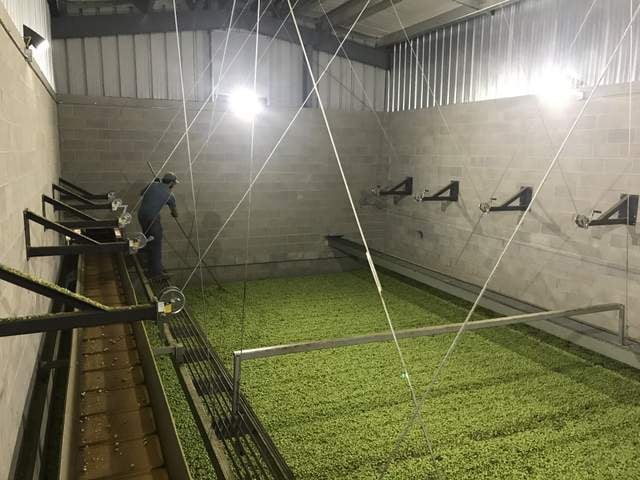
But to create innovative new products like extracts, Michigan hop farmers will need your support. Clearly, the industry has its challenges but also unique opportunities. I’ve detailed many examples in this article, but here’s one more: Midwest brewers, it’s pretty easy to get to these farms, especially considering our new COVID economy. MI Local Hops is a 220-acre spread in Williamsburg, just outside of Traverse City, both amazing places to visit. Beautiful hop fields await in the summer, but sales visits are welcome all year around.
“We’re a new farm that you can grow with,” said Moran. “We’re as excited about craft beers as the craft brewers are. Five years in, I think people are going to be able to learn a lot from us. We’re also going to be able to offer a wide hop selection, and we save breweries on shipping in the Midwest. We also have the ability to offer Midwest brewers hop selection opportunities, which is something that’s only offered in the PNW. So overall, we have the ability to learn and grow with the brewers. If there’s new hops coming into the market, we have the ability to plant those. They get the opportunity to see what a first-year hop versus a five-year hop smells like. We’re all about engagement, and I would say it’s a lot easier for a brew team from Detroit or Indianapolis or Chicago to come up to our farm, which is 220 acres, because you’re rarely going to get this kind of experience in the Midwest.”
I highly suggest you plan a visit soon. Without your patronage, there might not be any hop farms in Michigan left to go see.

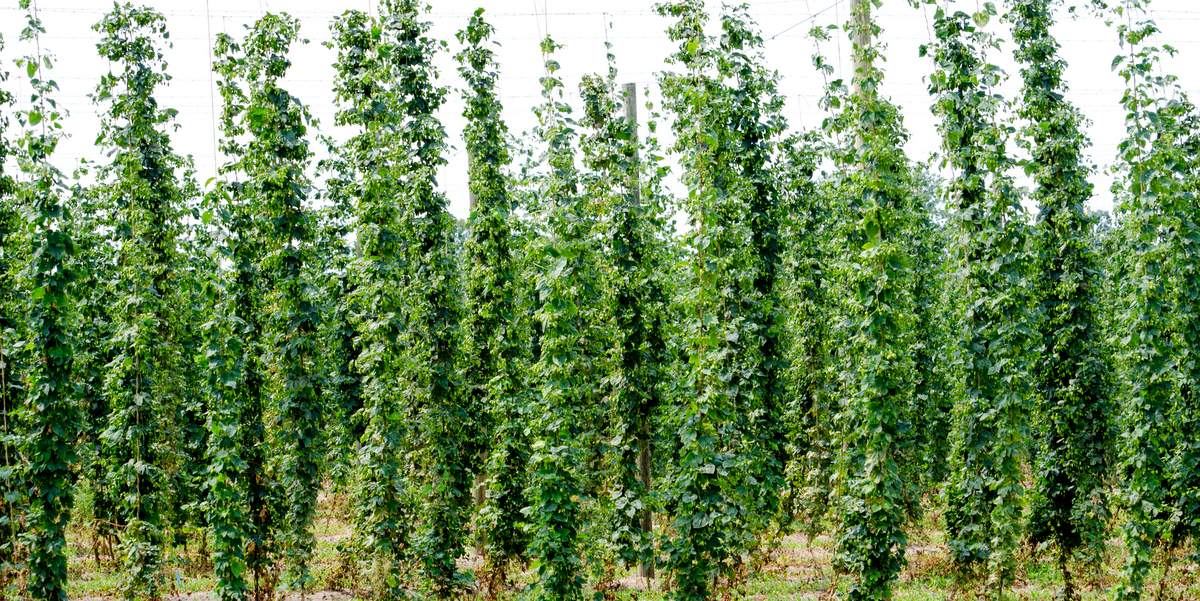
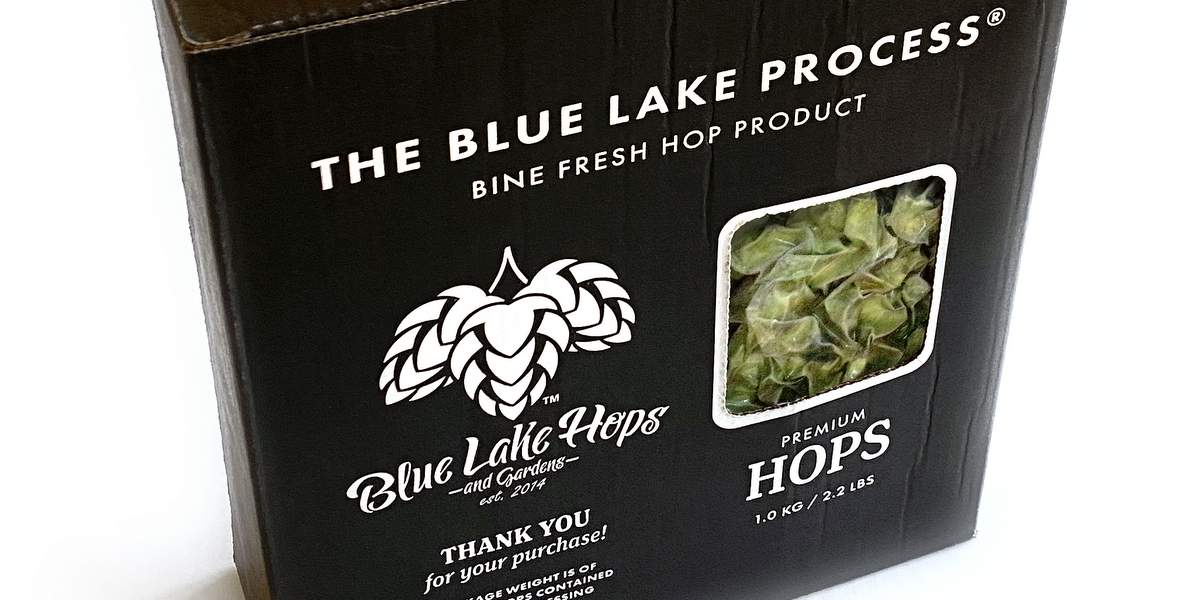
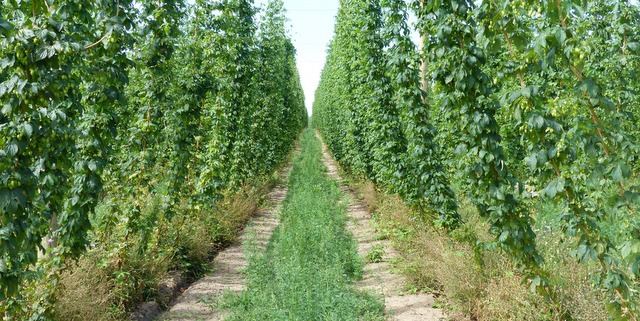

John F Kwant says
@BellsBrewery @MILocalHops Doing all that I “can” (16 oz at a time)